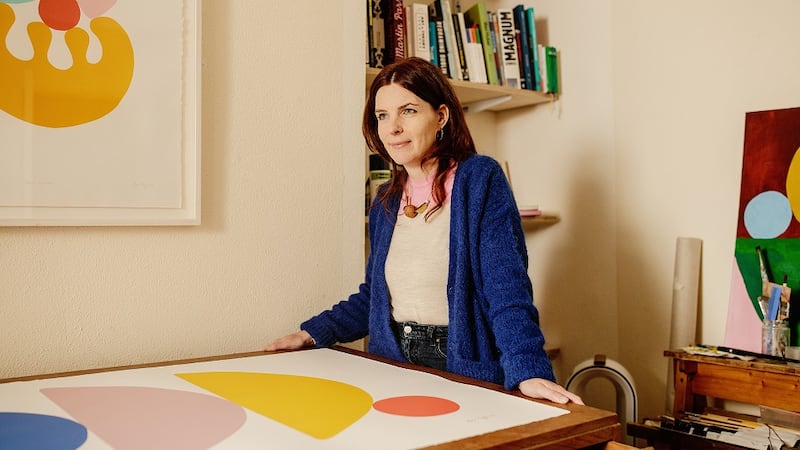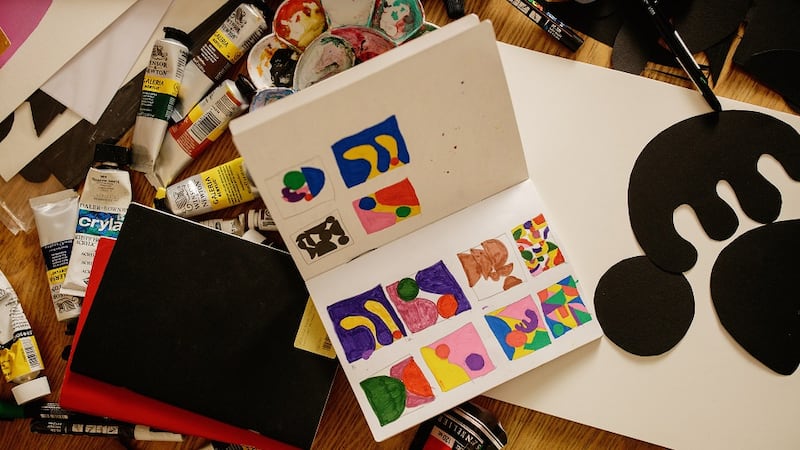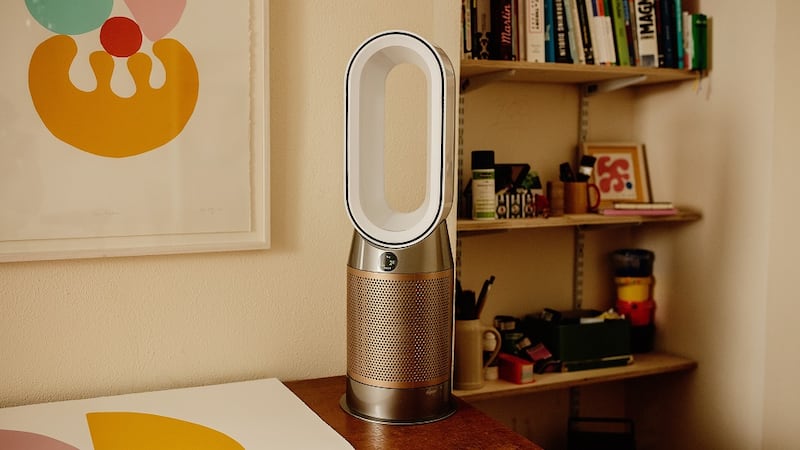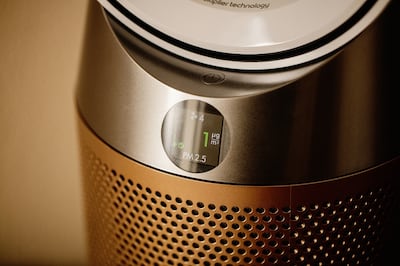Artist and print maker Alice Fitzgerald’s earliest memories are of fresh air and countryside. She lived on a farm in Co Cork up until the age of eight. Though her family subsequently moved to a Dublin suburb, “I’m still inspired by the countryside and nature,” she says.
She was always creative. “As a child I was always making and doing, whether drawing or making clothes out of tissue for my dolls. I knew I wanted to go to art college,” she recalls.
A degree in visual communications in TU Dublin followed, in which she studied graphic design, illustration, photography and multimedia. It was on an Erasmus year in the Dutch city of Utrecht that she developed her love of graphic design.
“Suddenly it just clicked with me in a way that it hadn’t before. I got more and more into modernist design, the ‘less is more’, minimalist approach,” she says.
Since graduation, Fitzgerald has held a variety of roles, including as design and art director of street culture magazine Mongrel – “a hotbed for Irish creatives”. She has produced graphic design work for creative agencies and directly for her own clients, including theatres, galleries and not for profits. She also began teaching art part-time.

The birth of her first child eight years ago prompted her to stop producing work commercially and focus on her own practice. “I always had the urge to make my own art, work that is not client driven,” she explains.
Fitzgerald began, just as she had as a child, sketching and painting purely for pleasure again, even designing clothes for children, much as she had her dolls. After the birth of her second child she joined Damn Fine Print, a screen-printing studio in Dublin whose members can use its equipment.
“I was experimenting, trying to develop my own visual language and playing with the interaction between shape, form and balance. I enjoyed being able to get into the flow and push the boundaries of that visual language, the infinite possibilities,” she says.
Today her work graces the walls of homes and civic spaces and is more in demand than ever, thanks to featuring in such high-profile events as Assemble, the first-ever group exhibition presented by Atelier Maser.
Fitzgerald works from the home in Dublin 8 she shares with her partner and children. Her studio is their former dining room and is right at the heart of their home, which is why she’s very careful about air quality.

“I work with a lot of different materials such as permanent markers, which are quite smelly, Spraymount, which is a spraying glue, and spray varnish or ‘fixer’, as well as acrylic paints, inks, oil paints and turpentine,” she explains.
These materials may emit volatile organic compounds (VOCs) which can accumulate in the atmosphere and can be hazardous when inhaled over time.
Air quality
To monitor and maintain air quality Fitzgerald uses a Dyson Purifier Hot+Cool Formaldehyde, a purifier with formaldehyde sensing technology that is designed to capture ultrafine dust, allergens and even potentially dangerous VOCs.

Formaldehyde is a colourless gas pollutant which can be released by furniture and wooden products containing formaldehyde-based resins, such as plywood and fibreboard, as well as DIY materials such as paint, wallpapers, varnishes and household cleaning products. It can actually be emitted by a host of household items including pressed fabric and even paper products.
The Dyson Purifier Hot+Cool Formaldehyde senses, captures and removes pollutants continuously. It also stops them leaking back into the room, thanks to fully sealed HEPA H13-standard filtration. What goes inside a Dyson, stays inside.

Dyson’s HEPA (high efficiency particulate air) grade of H13 means it can remove 99.95 per cent of all particles in the air measuring 0.1 microns in diameter. This is filtration sensitive enough to capture 99.95 per cent of ultrafine particles, including pollen and mould spores.
Yet it couldn’t be easier to use - Fitzgerald controls it using the Dyson Link app and Alexa.
It doesn’t just clean the air, it also warms her studio and provides cooling airflow when needed. “I live in an old, draughty house. We’re waiting to do a home renovation but in the meantime some of the windows don’t open, so I was worried about ventilation,” she says.
The purifier appeals to the aesthete in her too. A sleek silhouette is complemented by white and gold tones and, being a Dyson, is beautifully designed. “It looks great!” she says.
Discover more about the Dyson Purifier Hot+Cool Formaldehyde purifying fan heater at Dyson.ie










